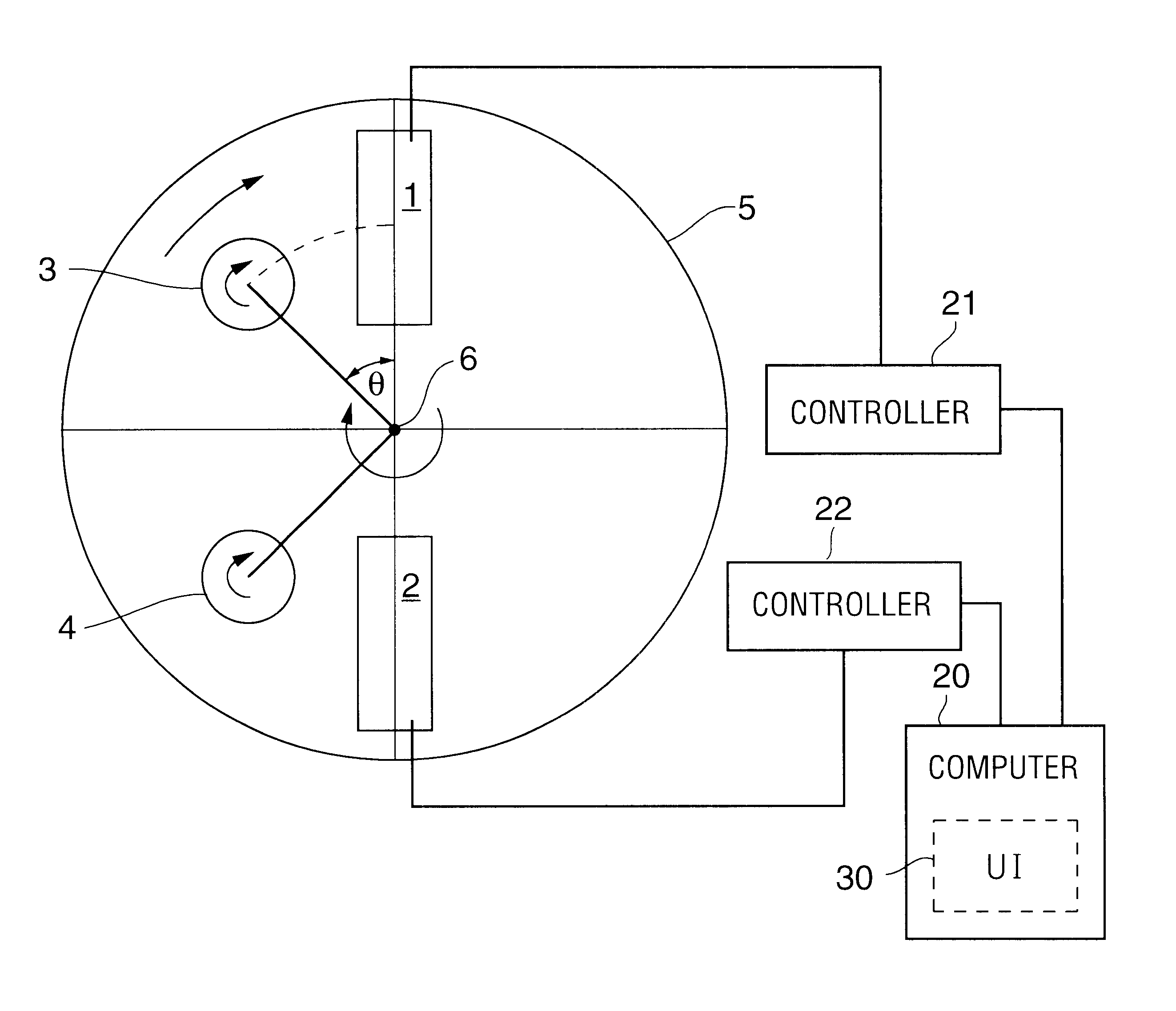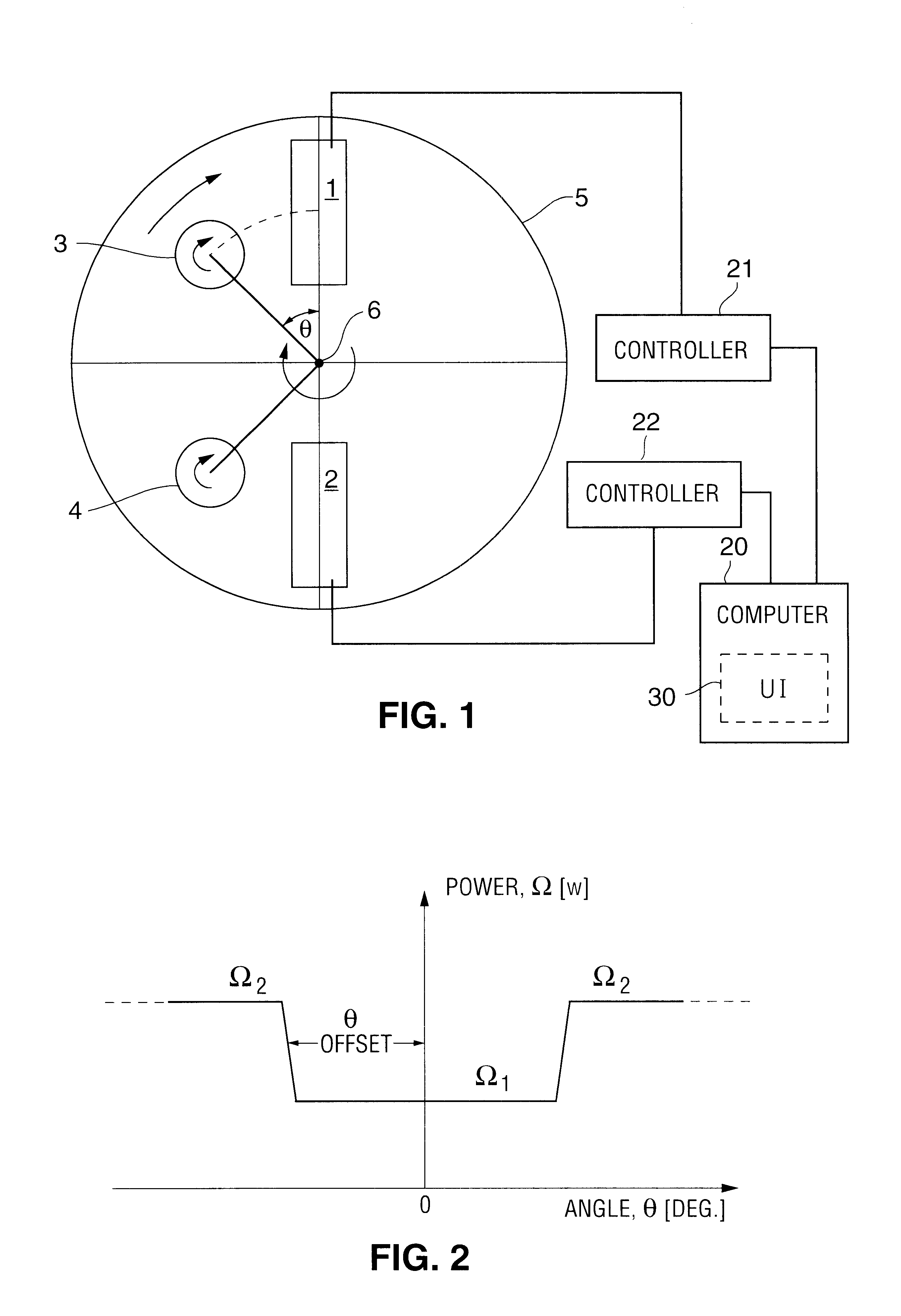Method and system using power modulation for maskless vapor deposition of spatially graded thin film and multilayer coatings with atomic-level precision and accuracy
a multi-layer coating and spatial grade technology, applied in vacuum evaporation coating, optical elements, instruments, etc., can solve the problems of distorted lithographic patterns printed on microelectronic circuits, tedious and inefficient processes, and lack of flexibility in masks or baffles
- Summary
- Abstract
- Description
- Claims
- Application Information
AI Technical Summary
Problems solved by technology
Method used
Image
Examples
Embodiment Construction
The invention pertains to methods and systems for vapor deposition (such as sputtering, CVD, and electron beam evaporation, thermal evaporation, and ion-beam plating methods and systems) in which a substrate to be coated is passed through a vapor of the coating material and accumulates a film (typically a very thin film) of the coating material through condensation of the vapor.
The invention provides a method of producing uniform or graded thin film and multilayer coatings on substrates with any surface curvature in a manner avoiding use of apertures or masks to tailor the deposition flux profile. In accordance with the invention, the power applied to a vapor deposition source is modulated (or the flux distribution of the source is otherwise modulated) as one or more substrates sweep across the source with controlled velocity to generate a thicker or thinner coating in some substrate regions relative to other substrate regions. Typically, the substrate also spins relative to the sou...
PUM
| Property | Measurement | Unit |
|---|---|---|
| thickness | aaaaa | aaaaa |
| velocity | aaaaa | aaaaa |
| power | aaaaa | aaaaa |
Abstract
Description
Claims
Application Information
 Login to View More
Login to View More - R&D
- Intellectual Property
- Life Sciences
- Materials
- Tech Scout
- Unparalleled Data Quality
- Higher Quality Content
- 60% Fewer Hallucinations
Browse by: Latest US Patents, China's latest patents, Technical Efficacy Thesaurus, Application Domain, Technology Topic, Popular Technical Reports.
© 2025 PatSnap. All rights reserved.Legal|Privacy policy|Modern Slavery Act Transparency Statement|Sitemap|About US| Contact US: help@patsnap.com



